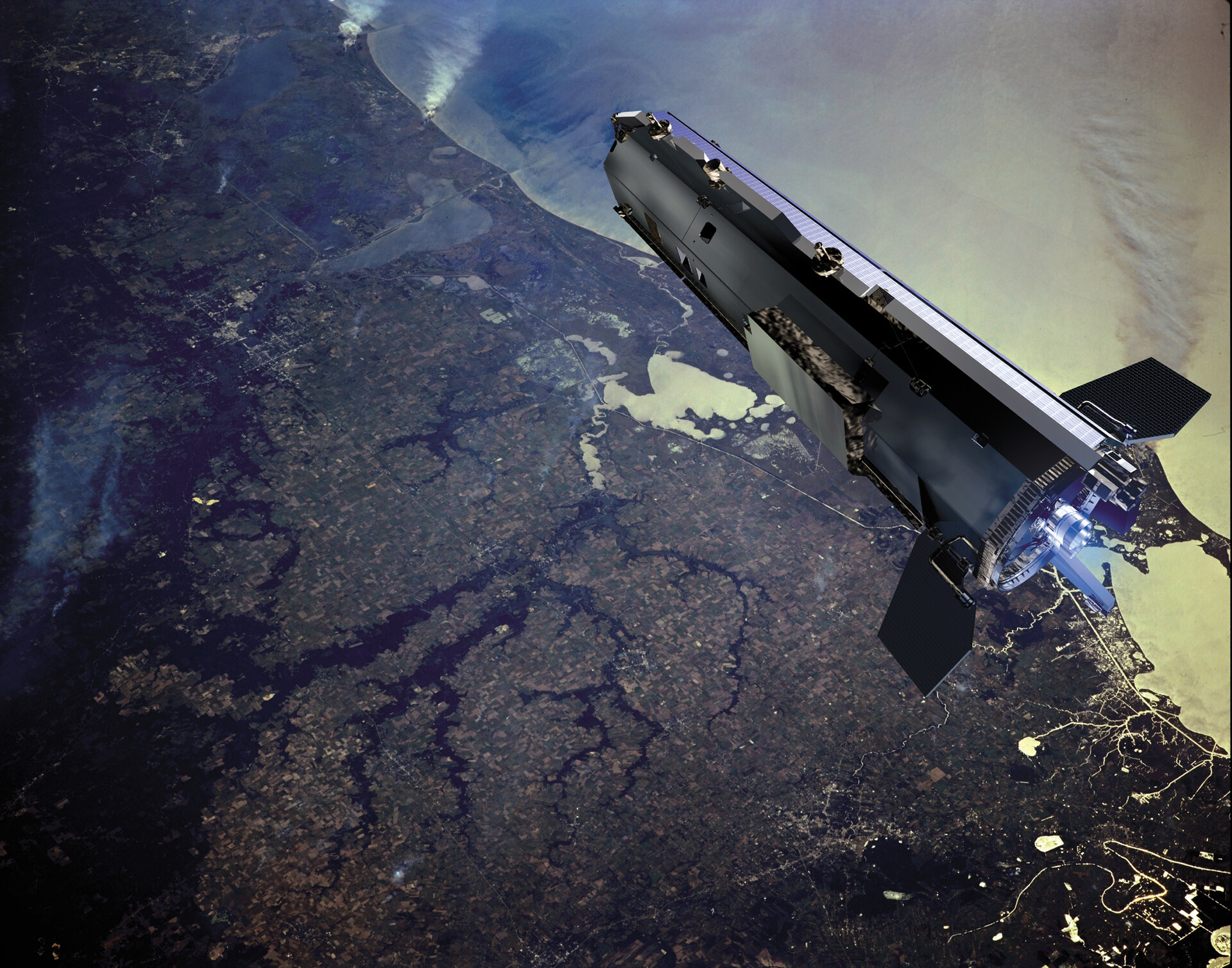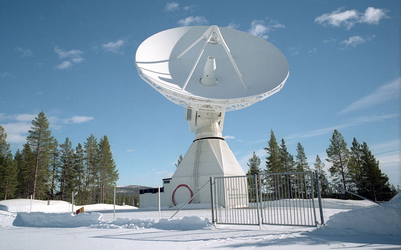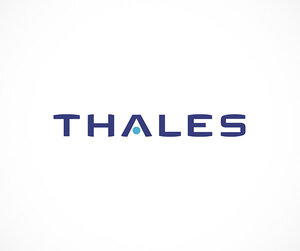Facts and figures
Full name: Gravity field and steady-state Ocean Circulation Explorer
Launched: 17 March 2009 from the Plesetsk Cosmodrome, Russia
Duration: After 4 years and 8 months orbiting Earth, the mission came to an end on 11 November 2013, far exceeding its 20-month design life
Mission control: European Space Operations Centre (ESOC), Darmstadt, Germany
Data download: Kiruna (Sweden) and Svalbard (Norway) ground stations
Processing & archiving: ESA’s Earth observation centre in Italy (ESRIN) and the distributed High-level Processing Facilities
Number of instruments: 3
Mission cost: €350 million (including launcher and operations)
Orbit: about 260 km altitude, polar, Sun-synchronous
Mass: 1100 kg
Size: 5.3 m long, about 1 m body diameter
Propulsion tank: 40 kg of xenon
Mission objectives
– to determine gravity-field anomalies with an accuracy of 1 mGal (where 1mGal = 10–5 ms–2).
– to determine the geoid with an accuracy of 1-2 cm.
– to achieve the above at a spatial resolution better than 100 km.
Geoid accuracy: 1 - 2 cm vertically with 100 km spatial resolution
Gravitational acceleration at Earth’s surface is about 9.8 m/s², varying from a minimum of 9.788 m/s² at the equator to a maximum of 9.838 m/s² at the poles.
The six accelerometers (three pairs in three orthogonal directions) are some 100 times more sensitive than any previously flown in space.
Industrial Core Team
Thales Alenia Space (Italy) – satellite prime contractor
EADS Astrium GmbH (Germany) – platform contractor
Thales Alenia Space (France) – gradiometer
ONERA (France) accelerometer & system support
The Core Team led a consortium of 41 companies distributed over 13 European countries.
Technical details:
| Satellite | |
|---|---|
| Configuration |
Minimum cross-section in the direction of motion (1.1 m2) Approx. 9 m2 solar array aligned in the orbit plane 1050 kg launch mass |
| Structure |
Several carbon fibre, reinforced plastic structural compartments; load-carrying external structure Structural dynamics: 110 Hz axial, 18 Hz lateral |
| Thermal control |
Passive with heaters High-thermal-stability gradiometer compartment (10 mK @ 5 mHz) |
| Electrical power |
24-32 Vdc unregulated bus; protected and redundant lines Fixed Gallium Arsenide (GaAs) cell solar array, 1300 W Lithium Ion (Li-Ion) battery, 78 Ah, made of 52 strings with 8 cells each |
| Attitude control |
Nadir pointing Only magnetorquers for attitude control Wide-field star trackers hybridised with gradiometer angular acceleration measurement Coarse Sun sensors and magnetometer for acquisition and safe mode AOCS/DFACS application software run in central computer |
| Drag control | Ion thrusters commanded in closed loop, based on gradiometer common-mode acceleration measurements |
| Reaction Control System (RCS) | 20 mN Kaufman-type ion thrusters (2x) |
| Data handling |
Packet telemetry Flexible and reallocatable packet sizes High-rate (10 Hz) gradiometer-to-computer link via 1553 bus for drag control command synthesis |
| Telemetry and Command | |
|---|---|
| RF |
S-band up- and down-link and ranging 2 hemispherical antennas on solar array edges |
| Telecommand | 4 Kbits/s |
| Telemetry | Up to 1.2 Mbps |









